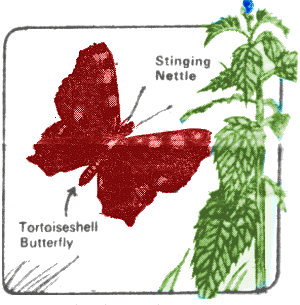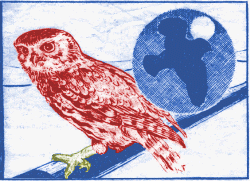Walk on the Wild Side
Get more fun from a stroll in the country
LISTEN to this: There was a big green hill with a bit out of it and lots of birds and butterflies. Now listen to THIS: The hill rolled down past the scar torn out by the glacier a million years ago. The limestone edges helped the cornflowers grow in great blue clouds attracting Chalk Blue butterflies on which swifts pounced to feed.
It is the same hill, but the second time it sounds much more interesting. All you need to be able to describe it the interesting way is to 1earn to look at the land around you. You can tell where a glacier has been by the way it has cut through and down a hill leaving a fairly wide valley with sharp edges.
Attract

If the land cut by the glacier is chalky limestone certain plants grow very well in the soil. You can learn which. And the flowers attract different types of butterflies which you can recognise ... and some kinds of birds feed on different insects and you can learn to recognise these, too. It can make a walk in the country or park more fun if you start to use your eyes to pick out some of nature's patterns.
For example, you can bet that it was a barn owl you saw near that churchyard.
Tawny owls usually keep to the woods. The height and shape of trees help
you to te1l what kind they are. Different creatures live in pine woods and
oak copses. Once you know about trees and soil, it's really a bit like playing
detective and putting the clues together. As you start building up a case,
you know what else to look for. Where different types of birds gather. What
tracks foxes make and what kind
of territory is favoured by a badger. To make things simple for people there
are signposted walks through woods and over moors, called nature trails.
Usually you can pick up a little map at the start showing you how to follow
the route. The signposts explain about the flowers and animals you are likely
to see. The Countryside Commission have opened a trail with a system that
allows you to plug in to tape-recorded information and hear details
 of what
you can see. And there are now lots of excellent books to help you. The
illustrations on this page were taken from the Nature Trail series (Usborne.
75p). For a list of useful addresses of more books send a stamped addressed
envelope to Junior Mirror, Daily Mirror, 33 Holborn, London EC1P 1DQ.
of what
you can see. And there are now lots of excellent books to help you. The
illustrations on this page were taken from the Nature Trail series (Usborne.
75p). For a list of useful addresses of more books send a stamped addressed
envelope to Junior Mirror, Daily Mirror, 33 Holborn, London EC1P 1DQ.
 FOCUS
ON WILDLIFE
FOCUS
ON WILDLIFE
THE Little Owl lives in Europe and Asia and was only introduced to Britain late last century. It was successful in its new environment and spread quickly throughout England and Wales to the Scottish lowlands. Although it will eat small birds, its diet consists mainly of large insect pests and their larvae, frogs, lizards and small mammals such as voles and mice. Most hunting for food is carried out at dawn or dusk, but the Little Owl is often seen in broad daylight and perches on telegraph poles and fences on open farmland.
WHAT DO YOU KNOW ABOUT THE COUNTRY?
How much do you know of the world about you? This quiz will test your
knowledge of the countryside.
Do these creatures walk, swim or fly?
- Pipistrelle.
- Muntjac.
- Painted Lady.
- Zander.
- Vole.
Which creature do you associate with:
- Dick Whittington.
- Dick Turpin.
- The Ancient Mariner.
- St. George.
- Jonah.
Trees:
- In what kind of tree did King Charles hide?
- What tree provides conkers?
- What kind af tree is used at Christmas?
- What tree provides cricket bats?
- What kind at tree is a Bramley?
Are these salt water or freshwater fish?
- Pike.
- Bleak.
- Tuna.
- Dace.
- Sole.
Are these sheep cows or pigs?
- Hereford.
- Cheviot.
- Belted Galloway.
- Large White.
- Scottish Blackface.